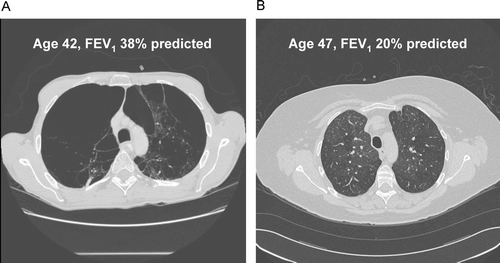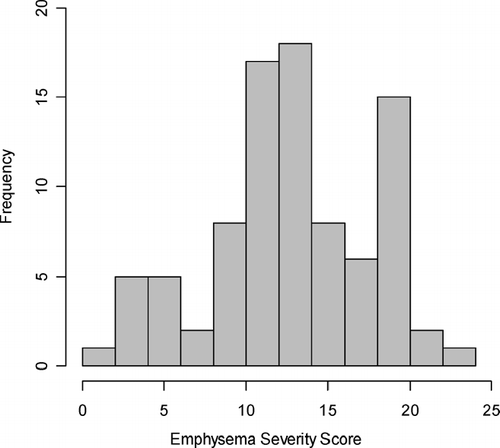Figures & data
Figure 1 Computed tomography (CT) scans from two participants in the Boston Early-Onset COPD Study, demonstrating the disconnect between emphysema severity on CT scans and lung function testing in patients with COPD. Subject A has severe emphysema yet higher lung function (emphysema severity score = 21.7; FEV1 = 38% predicted) than Subject B, who has minimal emphysema and lower lung function (emphysema severity score = 4.0; FEV1 = 20% predicted). The mosaic attenuation in Subject B is consistent with airways disease as a cause for the severe airflow obstruction.

Table 1 Emphysema severity scale
Figure 2 Distribution of computed tomography emphysema severity scores in the Boston Early-Onset COPD Study.

Table 2 Differences between emphysema-predominant (N = 66) and airway-predominant (N = 22) probands in the Boston Early-Onset COPD Study
Table 3 Asthma-related phenotypes in emphysema-predominant (N = 66) and airway-predominant (N = 22) probands in the Boston Early-Onset COPD Study.
